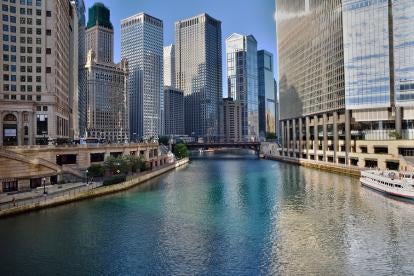Since the launch of the Chicago Bike Share Program two years ago, getting around Chicagoland has never been easier. The city’s Divvy bike program has made it a simple process for residents and visitors to avoid delays of the Chicago Transit Authority (CTA) during busy times of the day.
However, many of the city and suburban residents have yet to embrace the concept of renting a bicycle at more than reasonable prices for a short ride through congested areas of town. This is likely because of the video that aired with the story of a 24-year-old who was seriously injured after being struck by a vehicle while riding a Divvy bike on Lake Shore Drive in the fall of 2015. The medical student suffered brain trauma.
Since its inception, the Divvy program has reported more than 3.2 million completed rides. Statistics from the Chicago Department of Transportation (CDOT) are even more impressive knowing that only 18 accidents involving Divvy have occurred in all that time. The limited number of collisions seems a bit surprising to motorist riding behind cyclists traveling down Lake Shore Drive and Dan Ryan Expressway during heavily congested times of the day.
According to Active Transportation Alliance (ATA) Executive Director Jason Jenkins, “It’s not really particularly surprising. You find similar safety data and crash-rate data from other bike-share programs in other cities.” Statistics from Tulsa Oklahoma support what he says. Tulsa’s first bike sharing program was launched in 2007. Since then, there has not been one fatality out of 10 million rides and only 40 injuries as of last year.
 Short Trips Make Way to Fewer Accidents
Short Trips Make Way to Fewer Accidents
There may be various reasons why the accident rates in the Divvy program are so low. The city offers two opportunities to rent a bicycle as either a member of the program or as a 24-hour pass holder. Even though the average duration of a bicycle trip taken by 24-hour pass holders averaged approximately 30 minutes, that number drops to 12 minutes on average for annual members. In addition, members typically travel 1.6 miles on average while 24-hour pass holders average a travel distance of 1.8 miles.
Statistics show that less than one out of every three trips taken by annual members exceeded two miles and less than six percent exceeded four miles. Being able to avoid incurring overage fees by renting the bicycle longer than 30 minutes is likely one of the major factors why the average trip distance is so low.
Chicago’s Divvy’s Safety Design
The bicycle share program offers only one type of bicycle that has been designed for safety. Each bike is constructed with blinking lights in a sturdy frame. Overall, the bike was designed so that bicyclists could only sit upright, making it more difficult to make unnecessary maneuvers that could endanger the safety of the rider.
Likely the biggest factor in the safety of the program involves the bike’s low gear ratio that discourages faster speeds. In addition, the bicycles are heavy and constructed with fat tires and a low center of gravity that makes hitting one of Chicago’s notorious potholes more bearable. The enclosed brake system provides quick stopping even in the wettest outdoor environments and the electrical generator that powers the light ensures that every Divvy bike is easy to see in the dark. Surprisingly, helmets are not required, nor are they provided with every rental.
Bike Sharing Is Here to Stay
Chicagoland is now recognized as America’s bike sharing capital because it currently maintains 1750 bicycles in its fleet, which are available at 300 stations. The number of stations is expected to increase to 476 in the months ahead. Even though Montréal Canada and New York City have more bicycles each, the city of Chicago has more bike sharing stations and a wider service area than any other bike-sharing program in North America.
The expansion of the program is even more impressive due to the unforeseen setbacks that occurred at the beginning its 2013 launch. Back then, the Montréal-based bicycle and equipment provider filed for bankruptcy, which delayed the expansion of bike stations throughout the city. However, the system is on track to expand out to more than 86 square miles throughout the Windy City and will eventually encompass 38 percent of Chicago’s total area.
New stations in the city are opening each day in both residential and urban areas. According to statistics, more than 1.3 million individuals or 56 percent of those throughout the metropolitan area will have accessibility to the bike sharing program at some point in the summer of 2016. In addition, the city has plans to increase the total number of bikes to 4760 in the near future.
The success of the program has become infectious and has inspired the suburban Evanston and Oak Park communities to join in. When completed, more far city neighborhoods will have their own bicycle stations to allow easy access throughout the entire metropolitan area.




 i
i

